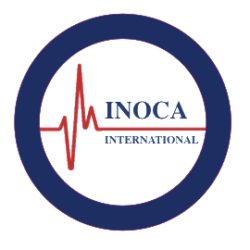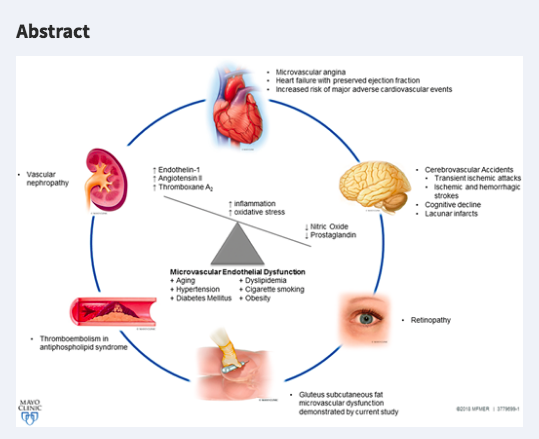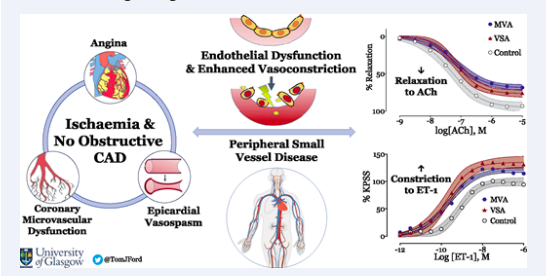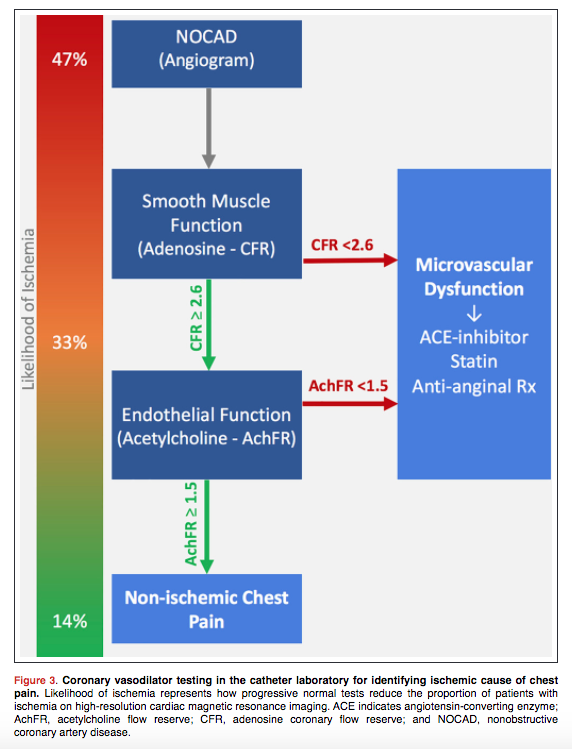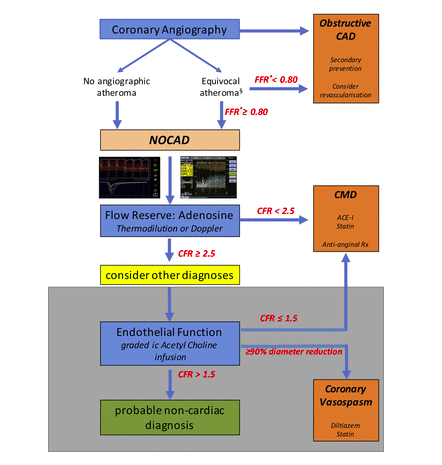The wall of the blood vessel (coronary artery) supplying the heart muscle has got three layers: the innermost layer contains endothelial cells, the middle layer contains the smooth muscle cells and the outermost layer contains collagen fibres for support.
The endothelial cells naturally release a substance called nitric oxide (NO), that then diffuses along into the neighbouring smooth muscle cells and causes these cells to relax. This leads to the coronary artery dilating, which results in an increased blood flow to the heart muscle. This is an important physiological response to exertion.
Endothelium-dependent CMD essentially means an inability of the endothelial cells to produce nitric oxide. As a result, the smooth muscle cells are unable to relax and the coronary artery is unable to dilate as required. This results in blunted increase in blood flow to the heart muscle during times of stress, which results in angina.
Endothelium-independent (or non-endothelium dependent) CMD refers to an inability of the smooth muscle cells to relax despite an adequate amount of nitric oxide. This, again, results in blunted increase in blood flow to the heart muscle during times of stress, which results in angina.
Therefore, both group of patients have an inability to dilate their coronary arteries in response to stress, which reduces the blood flow to the heart muscle during times of stress, leading to angina
